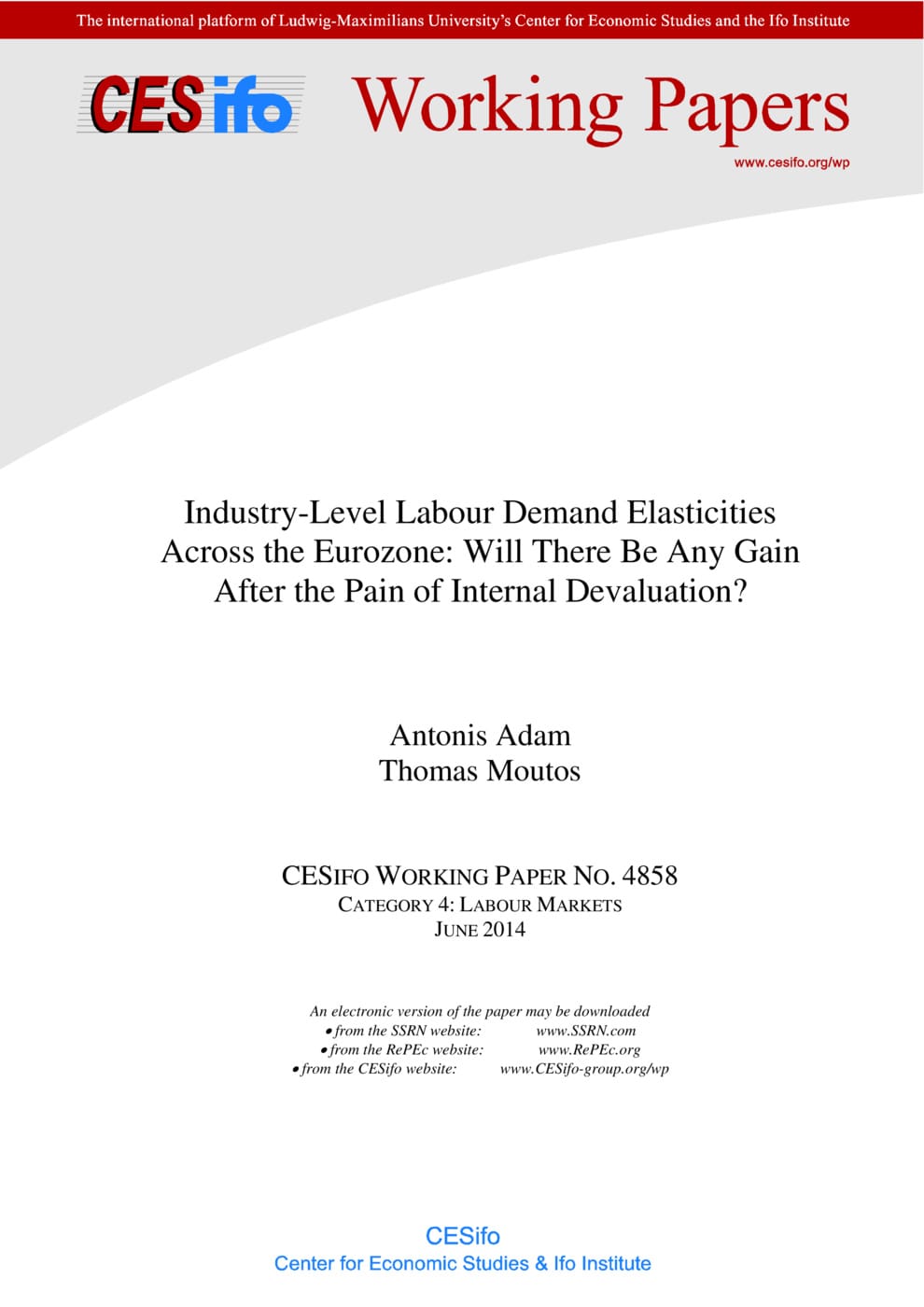Industry-Level Labour Demand Elasticities Across the Eurozone: Will There Be Any Gain After the Pain of Internal Devaluation?
CESifo, Munich, 2014
CESifo Working Paper No. 4858

In this paper we estimate disaggregated labour demand equations using panel data involving observations across time (1970-2007) for twenty-three industries across eleven euro area countries. By using the EU KLEMS database, which provides data across countries, we provide industry-by-industry estimates of the labour demand function. The values of our estimated (own-price) elasticities of labour demand are substantial, and in accordance with the findings of the empirical literature. Independently of whether we use level or time-differenced data, the (absolute value of the) estimated conditional elasticities are bracketed in the interval [0.05, 0.80], with the (un-weighted) mean elasticity across the various methods ranging from 0.26 to 0.43. The values of the estimated unconditional elasticities are similar in size and range, and the same holds true for country-specific wage-elasticities of labour demand. Our results indicate that the experienced wage declines in the periphery countries of the euro area can, when the contractionary credit and budgetary policies come to an end, have a non-negligible, albeit modest, effect on future employment growth.
Labour Markets
Monetary Policy and International Finance